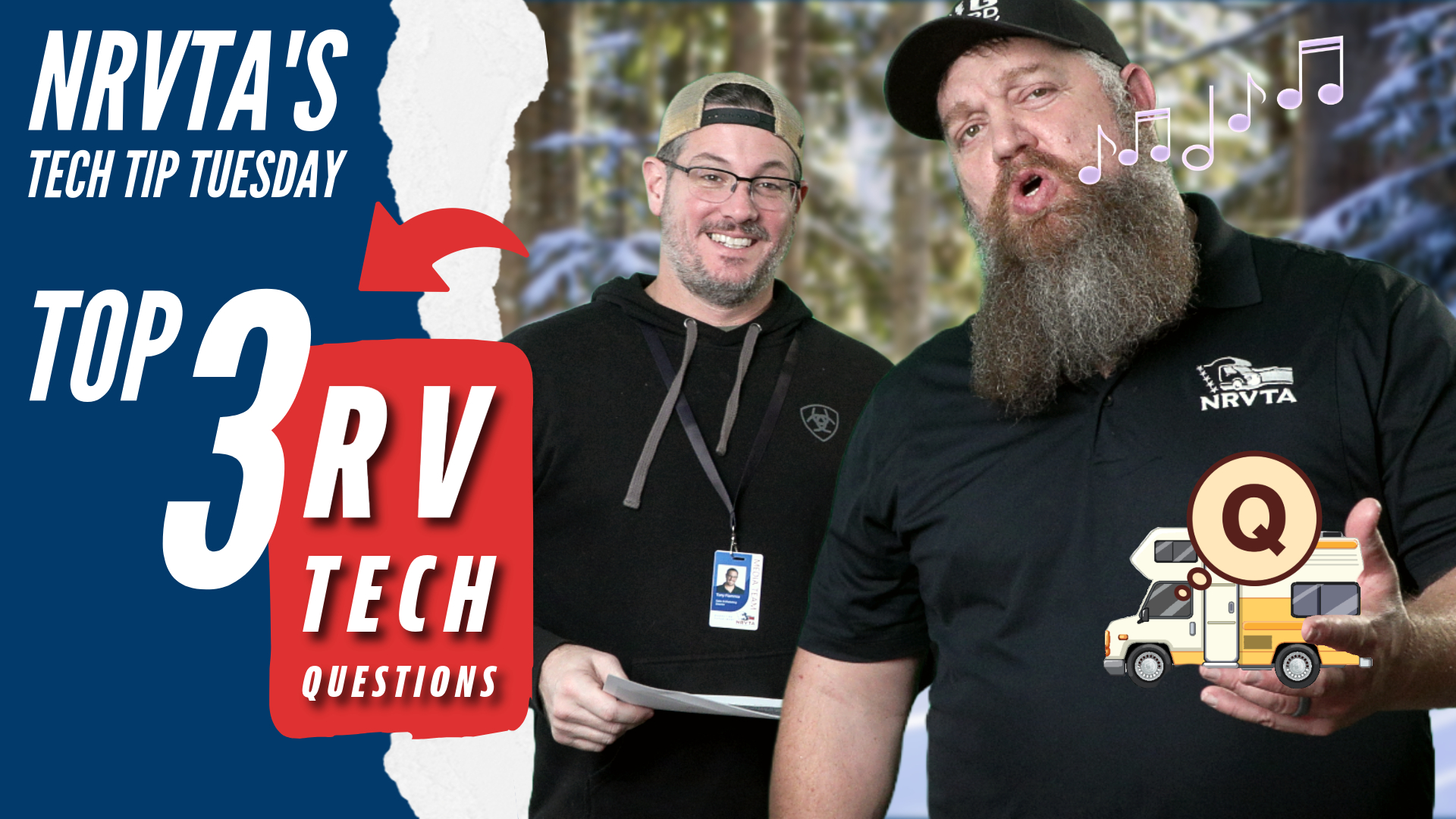Get your RV Technician Certification in as little as 5 weeks!

Welcome to another 2-Minute Tech Tip Tuesday brought to you by the National RV Training Academy—the largest hands-on RV training facility in America! Today, we’re tackling common challenges RV owners face with winterization, heating systems, and water heaters. Let’s dive in.
Frozen Pipes in a Heated Underbelly
Question: My Keystone Montana 3685FL with an Arctic Package keeps freezing below 10°F, even with the furnace set at 70°F. Why is this happening?
Answer:
The Arctic Package is designed to handle temperatures down to around 0°F under ideal conditions. However, factors like wind can drastically reduce its effectiveness. Here’s what you can do:
- Inspect the Ductwork: Ensure the duct feeding warm air to the underbelly is intact and secure. Loose or poorly connected ducts can reduce airflow to critical areas.
- Skirting: Install skirting around the RV to reduce heat loss from the underbelly. Consider inflatable skirting for easy installation and improved insulation.
- Additional Heating: Place incandescent light bulbs or a small space heater in the underbelly for extra warmth.
- Pipe Insulation: Wrap exposed pipes with foam insulation sleeves available at hardware stores like Lowe’s or Home Depot.
These steps can significantly improve your RV’s performance in extreme cold.
Leaving the Water Heater On During Winterization
Question: If I’m only gone for two weeks, can I leave my water heater on while winterizing the rest of the RV?
Answer:
Yes, you can! When you bypass the water heater, it’s isolated from the rest of the system, so leaving it on is perfectly fine. The thermostat will maintain the water temperature, cycling on and off as needed, ensuring the tank stays toasty.
However, if you want to avoid winterization altogether for such a short time, consider these options:
- Drain the System: Completely drain the water system to prevent freezing.
- Cross Your Fingers (Southern Style): If temperatures won’t drop too low, some RVers in mild climates skip winterization and rely on heated tanks.
Just ensure you have a reliable power source for the water heater if you choose to leave it on.
Plastic vs. Brass Fittings for RV Water Heaters
Question: Should I replace the plastic fittings on my water heater with brass ones?
Answer:
No, and here’s why:
- Material Compatibility: Brass and aluminum (used in some RV water heaters) can corrode when in contact. This can lead to seized fittings.
- Safety Feature: The plastic plug is designed as a fail-safe. It will pop under excessive pressure, preventing more significant damage.
- Warranty Concerns: Modifying fittings can void your water heater warranty, particularly on Dometic models.
If your plastic plug becomes damaged, replacements are inexpensive and readily available online.
Pipe-Freezing Prevention Tips
Even with heated underbellies, RV plumbing can freeze under extreme conditions. Here are additional tips:
- Seal Gaps: Inspect and seal any gaps in the underbelly where cold air might infiltrate.
- Heat Tape: Apply heat tape to exposed pipes for extra protection.
- Monitor Temperatures: Keep an eye on the temperature in the underbelly using remote sensors.
When to Winterize and How
If you’re facing extended periods of freezing temperatures, full winterization might be the safest option. Winterizing involves:
- Draining the entire water system.
- Adding RV antifreeze to prevent residual water from freezing.
However, for shorter periods, leaving systems like the water heater operational can save you the hassle of full winterization.
Final Thoughts
Whether you’re battling frozen pipes, deciding on fittings, or planning your winter strategy, the right preparation can make all the difference. Remember, every RV is different, and conditions vary, so tailor these tips to your specific situation.
Have more questions? Drop us a line, and we’ll feature your question in a future Tech Tip Tuesday!
Get Registered Today!
Talk to a student advisor to learn more!